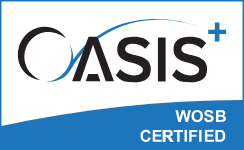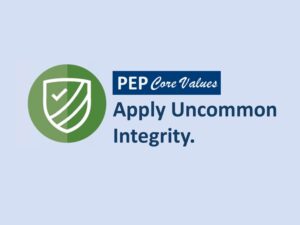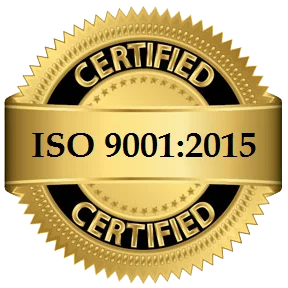
It’s widely recognized that diversity, equity, inclusion, and accessibility (DEIA) are critical to the success of an organization. In fact, in today’s work environment, it is a matter of competitive advantage. Providing a diverse and inclusive work environment ensures that employees feel valued, welcome, and respected. This is an important factor, not only for recruiting and retaining talent and fostering creativity and innovation, but also for improving overall organizational performance. A recent study found that organizations that spend time and resources on removing barriers and promoting DEIA initiatives are 2.6 times more likely to improve employee engagement and retention.
But what does this mean, what does it look like, and how do we get there? DEIA is more than numbers, more than words, more than an activity or two. It is most effective when embedded in the fabric of the organization, part of its culture, and a way of doing business.
Make DEIA a Leadership Priority
For most organizations, incorporating DEIA requires a significant strategic and cultural shift. Therefore, C-suite involvement is key. Organizations where executives make DEIA a priority through consistent tangible actions from the top see the most success. When leadership pays attention to DEIA progress, others will too, and it will permeate the culture.
There are numerous ways for management to demonstrate their commitment to DEIA and hold others accountable for doing the same. One approach is establishing an independent DEIA office, executive board, steering group, and/or work groups to bring visibility, develop an implementation strategy, design program offerings, perform assessments, coordinate stakeholders, and encourage participation in training, focus groups, affinity groups, and other activities. Leadership dedicated to investing in the staff, systems, and processes necessary to support DEIA efforts see the greatest results.
Establish a Baseline for Benchmarking
As with any policy objective, assessment is the first step toward achieving DEIA across an organization. Collecting and analyzing data will help identify opportunities for improvement. Some areas to examine:
- Number of employees from underrepresented groups in each occupational series and grade level.
- Attrition and information gleaned from exit surveys.
- Federal Employee Viewpoint Survey data.
- Diversity in employment applications, hiring decisions, professional development programs.
- Current programs, policies, standard operating procedures (those that support DEIA and those that might be barriers to it).
- Perception of staff regarding organizational culture (equity, inclusion, promotion/career advancement, recruitment).
- Potential solutions to overcome barriers and/or negative perceptions.
Much of this data can be gathered through the appropriate stakeholder offices (e.g., human capital, Equal Employment Opportunity, training and development, DEIA) while employee perceptions can be compiled through questionnaires, interviews, and focus groups (protecting the privacy of the participants).
During this process, organizations may also evaluate whether they have adequate systems to support a DEIA initiative that will track progress and results as well as fulfill ongoing and ad hoc reporting requirements.
Determine Goals and Desired Outcomes
While President Biden’s Executive Order (EO) on DEIA in the Federal Workplace outlines some general areas of focus, it is important for an organization to define a realistic view of what DEIA success looks like for their organization (e.g., an inclusive environment in which all staff feel respected and valued; where they feel a sense of purpose and connection to the mission and are actively engaged; where they feel safe and can be their authentic selves; where there is diversity at all levels throughout the organization) and how it will be measured. Equipped with the baseline data referenced above, specific goals, actions, milestones, metrics, and measures of success can be developed to move the organization towards its DEIA goals.
A representative example may include:
Goal: Recruitment and hiring from a diverse population of well-qualified candidates.
- Action 1: Focused partnerships with strategically selected universities.
- Milestone: Universities selected, and relationships established.
- Measures: X number of internships in FY XX and at least X% of those interns are converted to permanent hires.
Other actions under this goal might include:
- Inclusive language in job announcements and interview questions.
- Unconscious bias training to all employees.
Align HR Policies, Processes and Procedures
Organizations will find it necessary to have technical expertise in both DEIA and federal Human Capital. This is critical to ensure that DEIA strategies comply with all merit system principles, regulations, and policies while maintaining some organizational flexibility. They will need to stay abreast of EO’s, regulations, and Federal and departmental policies. They will also need to adopt benchmarks and best practices that support the agency’s and administration’s mission, strategic vision, and goals, and that allow for the development and/or modification of processes and procedures that help advance these goals.
A few examples of practices to align with DEIA goals:
- Incorporate DEIA into all performance appraisals.
- Add DEIA training during onboarding.
- Include training in the hiring process for employees, potential applicants, and managers.
- Start affinity groups.
- Leverage DEIA priorities and activities to enhance efficiencies of service and garner additional support.
Enrich the Employee Engagement/Experience
A comprehensive communications strategy will help increase employee understanding, generate buy-in, and ensure the success of DEIA initiatives. To establish and sustain this culture shift, employees should be able to hear from and ask questions of leadership about DEIA without concern for reprisal, and they should have opportunities to plan and participate in activities to advance DEIA within the agency. Open and consistent communication about results achieved and adjustments being made will assure staff that leadership supports DEIA goals in its decision making and that accountability and transparency are being prioritized.
We Are Here to Help
Here at Performance Excellence Partners (PEP), helping customers achieve their particular goals and mission objectives by becoming more agile and operationally effective is our specialty. We help by aligning people, policies, processes, and practices while equipping leaders, developing talent, and elevating employee experiences. As a minority- and woman-owned small business (WOSB), PEP has always valued diversity and been a proponent of employee-focused workplace practices. We support clients as they foster a more supportive corporate culture and inclusive work environment.
If your organization is conducting research to learn more about DEIA related support services, it is likely that questions will arise. In fact, this blog article may have even generated some. If our expertise supporting Federal DEIA and Human Capital initiatives would be helpful and you would like to schedule a time to discuss how we can help you with your DEIA efforts, please contact Jaime Ramirez at 714-374-1140 or jramirez@performexcel.com.
To Learn More about PEP and our experience in Human Capital Services, visit our Services page. To be the first to receive our next blog post, please join our mailing list. You can also download a PDF copy of this blog article here.





